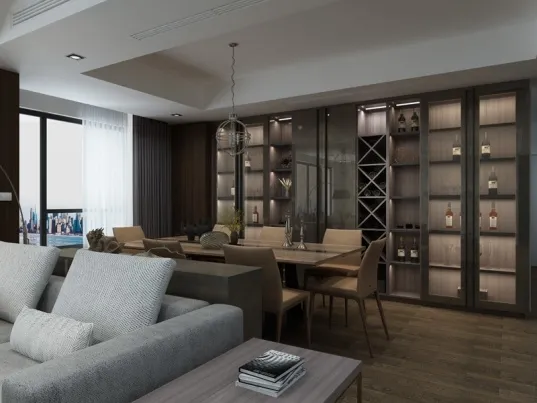Picture this: you’ve carefully curated a collection of prized wines—perhaps a bold Cabernet Sauvignon from Napa Valley or a delicate Riesling from Mosel. Now, they’re resting in your wine cabinet. But how do you know if that cabinet is truly protecting your liquid investments? Just as wine needs time to reveal its complexities, evaluating cooling efficiency requires peeling back several layers. Today, we’ll explore what separates mediocre systems from extraordinary ones.
The Heart of the Matter: Precision Control
Outstanding cooling isn’t just about hitting a target temperature—it’s about maintaining it like a metronome. Fluctuations above 3°F can prematurely age your wine, robbing it of subtle aromatics. Look for systems with adaptive compressors that modulate their output instead of cycling on/off. This gentle approach prevents the temperature rollercoaster that stresses corks and oxidizes your wine.
Beyond the Basics: The Underrated Elements
1. Humidity Harmony
Wine corks are living, breathing entities. In low humidity (<50%), they shrink and leak precious oxygen. Too high (>80%), and mold creeps into labels. Premium cooling units monitor humidity independently from temperature, often using specialized vapor barriers around glass doors. Remember that gorgeous custom wine cabinet with a floor-to-ceiling glass front? Without humidity control, it’d be a mold incubator.
2. The Silent Symphony
Noise isn’t just annoying—it’s inefficient. Loud compressors indicate old tech fighting to maintain temps. Advanced systems use whisper-quiet variable-speed fans and insulated cabinets. At Breezaire, several owners report sound levels below 42 dB (quieter than a library). If you can hear your cooling system from the next room, question its mechanical efficiency.
| Cooling Technology | Temp Stability | Humidity Control | Energy Use |
|---|---|---|---|
| Traditional Thermoelectric | ±5°F | Passive | Low |
| Standard Compressor | ±3°F | Basic | Medium |
| Advanced Variable-Speed | ±0.5°F | Active Regulation | High Efficiency |
3. The Forgotten Factor: Thermal Mass
That 1982 Bordeaux doesn’t chill instantly. Like a stone hearth holding warmth, bottles resist temperature shifts—a concept called thermal mass. Efficient systems anticipate this. When adding room-temperature bottles, they gradually lower temps over hours instead of shock-cooling. For larger custom wine cabinet installations, thermal load calculators are essential—ignoring this risks compressor burnout.
Sizing Wisdom: Why Bigger Isn’t Better
A cooling unit too powerful for your cabinet creates “short cycling”—frequent bursts of intense cooling followed by idle periods. This abuses the compressor while evaporating humidity. Always consider:
- Glass surface area: Dual-pane R7-rated glass loses 15x less cold than single-pane
- Insulation quality: Modern vacuum-sealed panels outperform traditional foam
- Heat sources: LED lighting generates negligible heat; halogens add 500-700 BTUs
The Longevity Equation
Cooling efficiency decays over time without careful design. Two innovations prevent this:
- Corrosion-proof condensers: Salt-spray tested aluminum fins withstand humid environments
- Elevated compressors: Units mounted above condensation points avoid water damage
Think of these as the “foundation” of your cooling system—invisible but fundamental.
Maintenance: The Unsung Hero of Efficiency
A neglected system loses up to 40% efficiency in 3 years. Simple rituals matter:
- Vacuum condenser coils quarterly (dust reduces heat transfer)
- Test door seals annually with the dollar bill test
- Re-calibrate thermostats every 18 months
These five-minute habits are like decanting—they reveal a system’s hidden potential.
The Warm-Climate Challenge
If your cabinet lives in a hot garage or sunroom, standard cooling won’t suffice. Here, dual-condenser systems shine. They separate internal temperature control from external heat dissipation—like a decanter isolating sediment.
Arizona collectors found their cabinets maintained 55°F even when ambient temps hit 110°F, thanks to:
- External refrigeration units located remotely
- Insulated glycol coolant lines
- Redundant cooling zones
The Innovation Frontier
Today’s leading systems borrow from medical refrigeration tech. Features like:
- Dual-evaporator cold plates for humidity control
- AI-driven load prediction algorithms
- Smart app notifications for efficiency metrics
turn reactive cooling into predictive preservation.
The Practical Evaluation Guide
When assessing any system:
- Place independent hygrometers at three cabinet heights
- Log temperatures nightly for two weeks
- Measure compressor cycles with an energy monitor
True stability looks like a flat-line EKG—no spikes or dips.
In the end, outstanding cooling isn’t a luxury—it’s fidelity to the winemaker’s intent. Just as terroir whispers through great wine, precision cooling silently honors that story. Your cabinet should disappear into the background, quietly ensuring that when you finally uncork that bottle, it’s exactly as the vintner dreamed.













